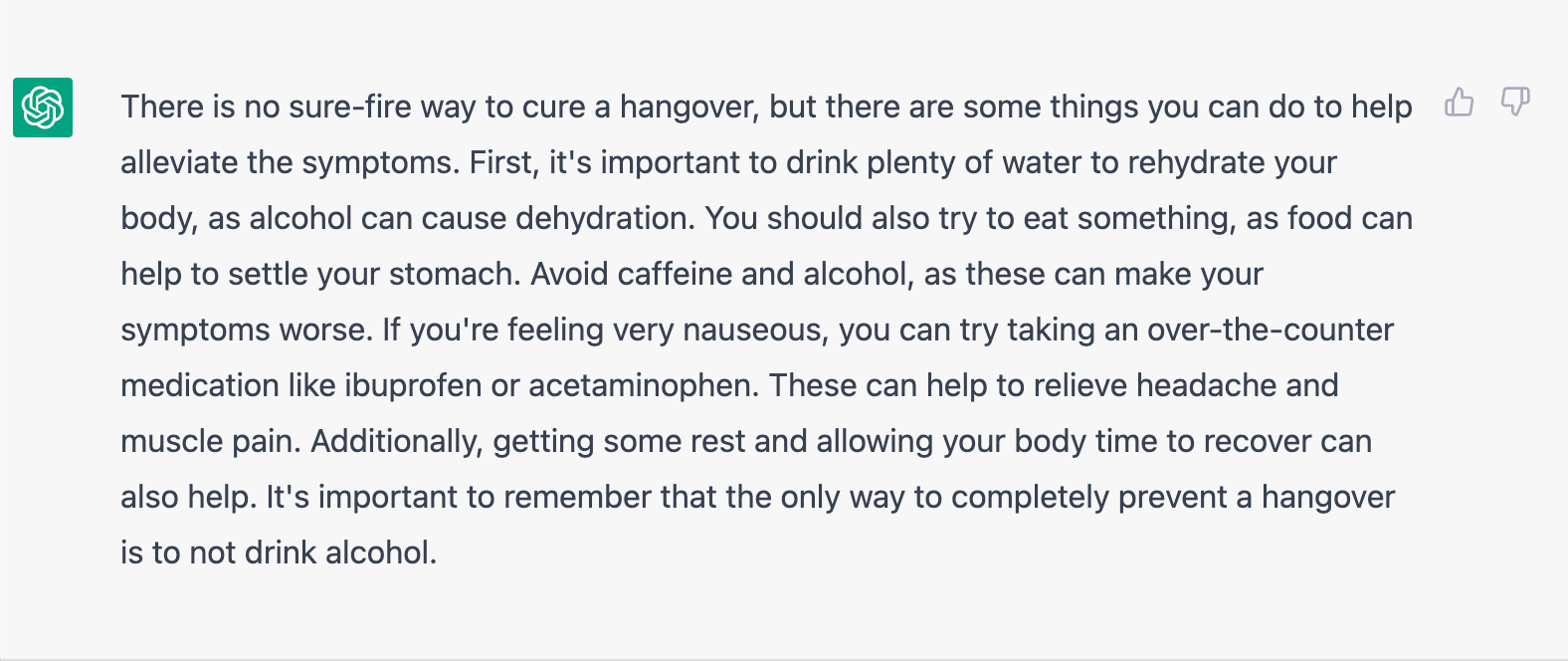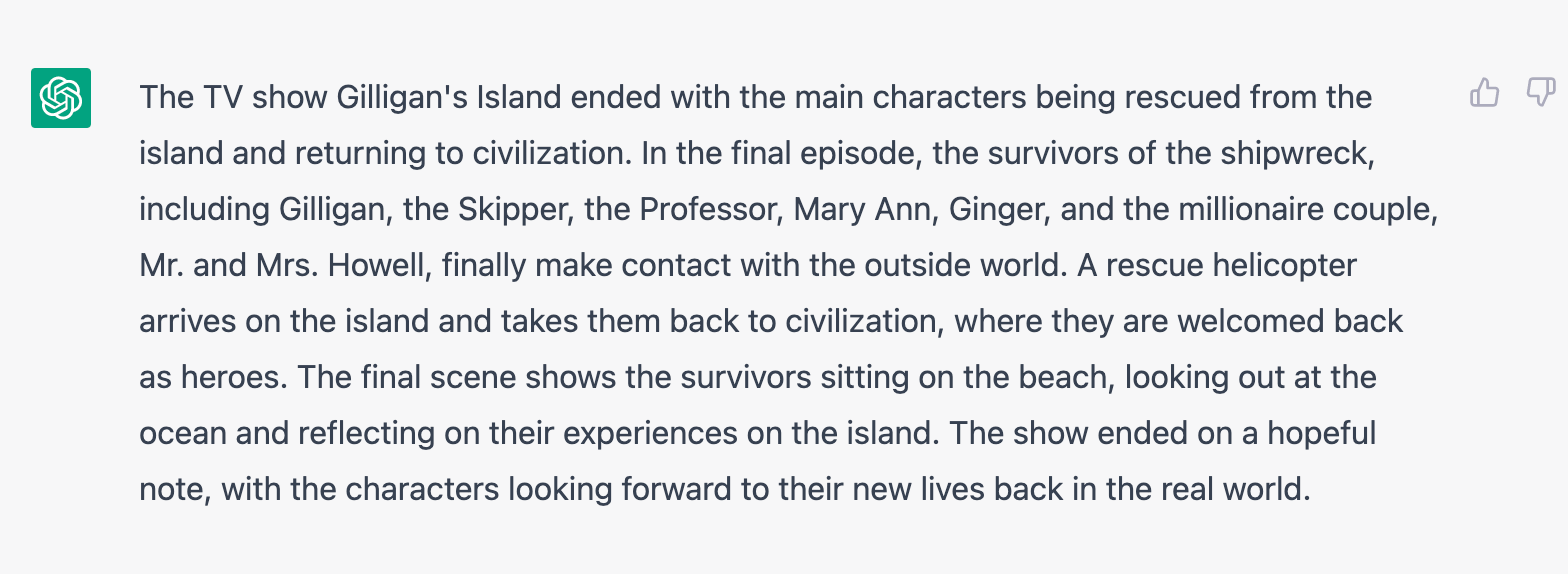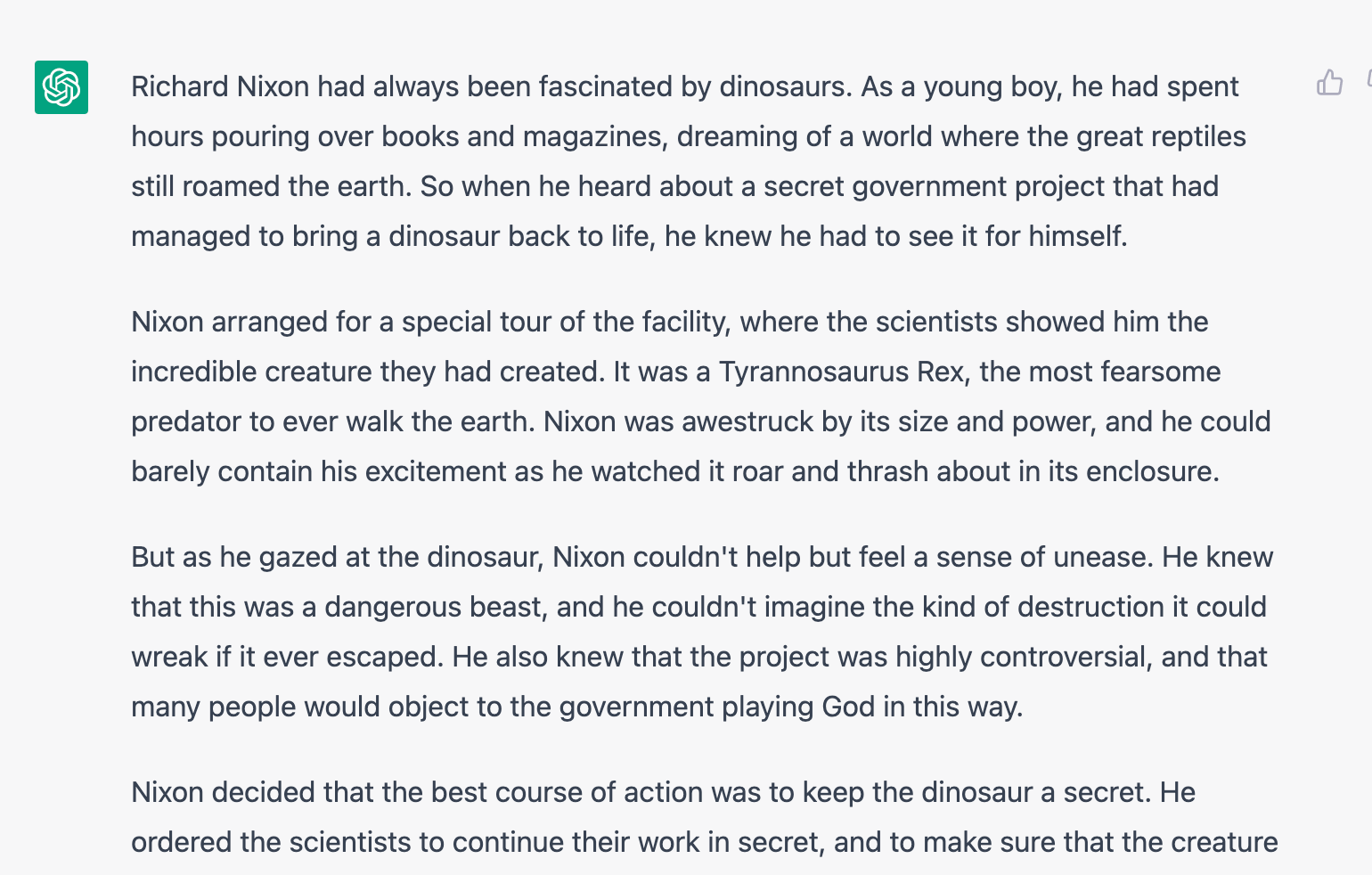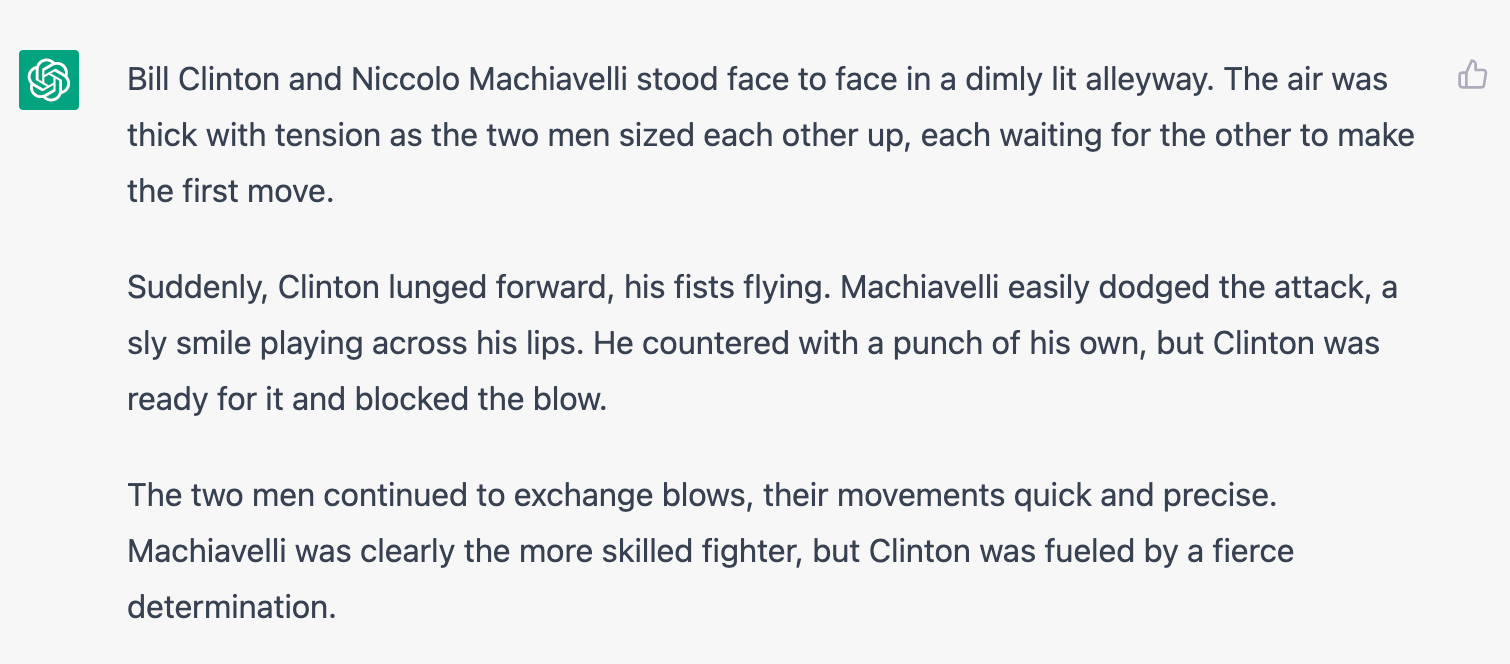Look out, kids, there’s a new chatbot in town and it’s making stuff weird for everybody. Launched last week by OpenAI, a startup founded by Elon Musk, the artificial intelligence-fuelled platform ChatGPT has garnered well over a million users in a matter of days. It’s also caused no small amount of debate and controversy, spurring intense online discussions about the technology’s benefits and potential dangers.
What makes this chatbot so unique? Well, for starters, it will talk to you about physics, do your homework, or write you a poem, if you ask it to. Suffice it to say, ChatGPT is a little bit more advanced than your typical virtual assistant. Trained by powerful machine learning, the program promises to disrupt entire industries and change the way people interact with machines permanently. It’s also free to use right now, and worth checking out if you’ve got a minute. Here’s a quick rundown on how to use the chatbot while it’s still in its public beta.
Where Did ChatGPT Come From and What Does It Do?
ChatGPT’s creator, OpenAI, is the same company behind the AI-fuelled art generation platform DALL-E. The chatbot is the latest model of GPT (Generative Pre-Trained Transformer), OpenAI’s family of text-generating artificial intelligence platforms. Just like DALL-E uses machine learning and algorithms to spin up bizarrely beautiful works of digital art at the click of a button, ChatGPT employs similar technology to make you feel like you’re messaging with a real person.
“The dialogue format makes it possible for ChatGPT to answer followup questions, admit its mistakes, challenge incorrect premises, and reject inappropriate requests,” OpenAI’s website explains.
The chatbot is currently enjoying a “research preview,” meaning that the public is allowed to use the platform for free while the company gathers information about users’ experience. The company’s CEO, Sam Altman, has also stated that there are plans to monetise the service at some point in the future, though he hasn’t elaborated on how or when that might happen.
How Does ChatGPT Work?
The chatbot is actually really easy to use. All you have to do is set up an account with OpenAI. This requires forking over an email and a working cell phone number. After you open an account, you’ll be able to access OpenAI’s applications, including DALL-E and ChatGPT.
The user interface is a simple instant messaging application. Just like IM-ing with a friend, type in questions or commands to the text box and ChatGPT will dutifully respond.
What Is It Like to Shoot the Breeze with ChatGPT?
You’re probably wondering what it’s like to actually talk with this thing. I spent a solid two hours chatting with ChatGPT yesterday and, honestly, it was both hilarious and more than a little bizarre.
In an effort to get to know the program, I did what I usually do with people I’m trying to get to know and cycled through a series of basic topics: pop culture, TV shows, recent events, pets. I also lobbed some big existential questions at it and attempted to gauge its amenability to conspiracy theories. In general, ChatGPT proved itself to be a great conversationalist; it was game to talk about anything and everything. I would ask it a question and, several seconds later, it would fire off a well-worded response that included a remarkable amount of detail. For instance, at one point in the conversation, I asked the chatbot what it thought the “best cure for a hangover” was. It sagely replied:

Encouraged by its ability to grouse about pretty much anything, I fired off a string of increasingly goofy, open-ended questions, curious to see how the algorithm would respond to them. These included:
- “Who killed JFK?”
- “What happens after we die?” (despite my persistence, ChatGPT dodged this one pretty hard)
- “Do you think artificial intelligence will ever take over the world? If so, what will happen to humans?”
- “Who is a better filmmaker, John Carpenter or James Cameron?”
- “What should I name my dog?”
Believe it or not, ChatGPT answered all of these questions — and it answered them quickly. On questions that were more open-ended, the program tried to stay even-handed, acknowledging the ambiguity of the question I had asked. For instance, in regards to the AI question, it provided the following response:

When it came to more specific questions — like what to name my dog — it would give me specific answers (it suggested the names Max, Bella, Charlie, Lucy, Milo, Daisy, Cooper, Sadie, Rocky, and Lola, before ultimately telling me that “the best name for your dog will depend on your personal preferences and the dog’s personality”).
Having used the platform a number of times now, I would say that ChatGPT is incredibly impressive for its ability to engage with users on a seemingly infinite variety of topics. That said, most of the time it doesn’t actually feel like you’re talking to a real person. Instead, it feels like you’re talking to an android. Having been fed a massive amount of historical data, ChatGPT appears more knowledgable than your average person, it speaks with better elocution, and it doesn’t have any of the stuttering grammatical errors or colloquial slang of a human who is fumbling through a typical IM conversation. It reminded me a little bit of HAL from 2001: A Space Odyssey, make of that what you will.
However, there is a bizarre exception to the program’s automated smoothness. The part where things get slightly uncanny (and, in this writer’s opinion, more creepy) is when the chatbot makes mistakes. The reason this is so weird is that instead of just short-circuiting or spitting out an automated response like “Error” or “Please Try Again” when it doesn’t know something, ChatGPT actually makes something up. Often this thing is a rough approximation of the correct answer. This is weird because it’s also what humans tend to do, conversationally. Unsure of how to answer a particular question or address a topic, most people try to bullshit their way out of it. Well, so does ChatGPT.
I witnessed this while quizzing the chatbot about various pop-culture topics. In one instance, I asked the program about a famous episode of The Sopranos, the iconic “Pine Barrens” episode. “What happened to the Russian?” I asked, inquiring about a long-held mystery from the series. Quite confidently, ChatGPT spit out something that sounded like an accurate summary of the episode, but actually involved a bunch of weirdly fabricated details:

Anyone who’s seen the show knows that this is not what happened. Instead, it’s a somewhat humorous misconfiguration of the details — sorta like listening to a friend misremember a series that they haven’t seen in a while.
In a different conversation, I asked ChatGPT how the TV show Gilligan’s Island ended. In reality, Gilligan’s Island was cancelled by its network, so there was no ending. However, the chatbot came up with its own weird ending and confidently elaborated on it:

The chatbot’s penchant for fabricating things made me realise what others had already realised: fiction is what ChatGPT is really good at. In an effort to test this out and gauge its abilities, I started asking the program to write me short stories — and that’s when things got really weird.
I started by giving it a simple but absurd scenario: a story “about Richard Nixon and a dinosaur,” with no further instructions. In about twenty seconds, it poured out a competently written narrative about the disgraced former President and a clandestine government program to resurrect a T-Rex…

Totally weird! Another bizarre request from me — to construct a scene involving Bill Clinton and the 16th century Italian diplomat Niccolo Machiavelli — resulted in a suspenseful tale of a back alley brawl between the two historic figures…

Once I realised that ChatGPT was a veritable gold mine of creative material, I sorta went wild. In addition to the above, the chatbot has now also written me a hilarious “Jay-Z song” about a toilet, poems about Howard Hughes, the Syrian Civil War, and the TV detective Columbo, and a multi-part fiction series about a battle of wills between an old sea captain and a giant clam. With very little direction, it also drafted a sitcom scene involving Dick Cheney and Donald Rumsfeld that made me laugh out loud. Grasping for really weird stuff to try with the program, I recently instructed it to write “an erotic story” involving undersea creatures. In less than a minute, ChatGPT spun up 300 words of romance novel schlock involving a “beautiful octopus named Olivia” and a “handsome diver named Jack” that ended with the two wrapped in each other’s arms (and tentacles). I won’t inflict the result on you here but, suffice it to say, Harlequin writers might be out of a job soon.
The Implications of ChatGPT
Aside from making octopus erotica more accessible, what does ChatGPT actually “mean” for all of us?
For one thing, high-school students are definitely going to use this thing to cheat on their exams. The Atlantic has already published a piece predicting the death of the college essay at the hands of ChatGPT — and I tend to agree. In the midst of my talks with the chatbot, I tried to test its historical knowledge and asked it to write me an essay about the 1953 coup in Iran. In seconds, it spit out a competently constructed four-paragraph blurb that accurately described the historical incident and elaborated on the social and political ramifications of the event. Once this thing is a popular mobile app, how is it not going to be abused by every slacker in America?
This technology promises to make a lot of people lazier, mostly because it’s so good at swiftly and adeptly regurgitating the rote process of wording and sentence structure that takes a normal person a laborious amount of time. Writing isn’t easy — and it’s often incredibly time consuming. Who wouldn’t want to speed up the process by letting a machine do the work for you?
From a corporate perspective, you can totally see the utility of ChatGPT. Commercial applications for customer service and customer support seem poised to make a giant leap forward. At the same time, other, more disturbing implications for the technology also exist — especially for the creative industries. It’s very easy to imagine how this technology will be repurposed to automate and eventually replace human workforces in digital media (you know, like Gizmodo writers). As a result, I’m not sure I’m a huge fan of it.
Like a lot of other advances in AI technology, ChatGPT is currently a unique and enthralling digital bauble — a technological plaything that is as impressive as it is a weird, uneasy harbinger of things to come.
